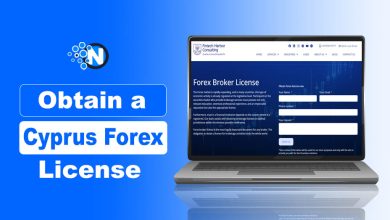Navigating the Forex Market – Strategies, Trends, and Insider Tips

The foreign exchange market or forex can be a rewarding market to invest in, but it is also highly complex with its own set of rules and regulations. Forex trading success lies in having the right strategy and tools before participating in this vast international financial arena.
In this article, we will share some tried-and-true strategies for navigating the forex market and insider tips on trends and opportunities awaiting prepared traders.
Understanding the Forex Market Basics
The Forex market, is a decentralized market where currencies are bought and sold. Understanding the Forex market basics is a vital for anyone who wants to invest in foreign currencies. Before diving into the market, it is of the utmost importance to gain a understanding of both the opportunities and risks, as well as the factors that are influencing the price changes.
To trade Forex you needs a Forex broker and in this regard U.S. Forex brokers are the best in the industry. With the professional experience and regulatory oversight of U.S. Forex brokers, traders are in a safe and secure trading environment, and funds are secure, and transactions are transparent.
Develop a Trading Plan
A well-defined trading plan is your roadmap to success. Determine your risk tolerance, set clear goals, and establish a trading strategy. Decide when to enter and exit trades, and stick to your plan consistently.
Risk Tolerance: Assess how much risk you are willing to take on each trade. Define a percentage of your trading capital that you are comfortable risking to avoid significant losses.
Trading Strategy: Explore various trading strategies, such as day trading, swing trading, or position trading. Your choice should align with your risk tolerance and available time for trading.
Entry and Exit Points: Identify specific entry and exit points for your trades based on technical and fundamental analysis. This will help you make informed decisions and reduce emotional trading.
Utilizing Stop Loss and Take Profit Strategies
Stop loss and take profit orders are two of the most essential strategies for Forex traders. A stop-loss order is placed with a broker to close out a trade automatically at a certain price level or when it reaches its predetermined maximum loss. It helps limit losses as soon as they occur before further market losses can be sustained. On the other hand, a take-profit order is placed with a broker to close out the trade automatically once it reaches its maximum gain.
Both strategies are essential for any successful Forex trader and can help traders stay on top of their positions without constantly monitoring the markets. It is also important to note that different brokers offer varying levels of stop loss and take profit strategies, so finding one that best suits your trading style is crucial.

Taking Advantage of Leverage to Potentially Maximize Profits
One of the significant advantages of Forex trading is the availability of leverage. Leverage allows traders to open more significant positions without committing much capital upfront. By using leverage, traders can potentially maximize their profits while minimizing their risks.
When using leverage, it can be easy for losses to quickly mount up, so it is best to use leverage in moderation and only when you have a well-defined trading strategy. Furthermore, selecting a broker that offers the right amount of leverage for your unique trading style is wise.
Read Also: Cryptocurrency Trading Bots: What are the Benefits and Limitations
Staying Up to Date with Market Trends and News
Any Forex trader that wants to stay in the market needs to stay on top of the market trends and news, as the market can dramatically affect currency prices in a sudden. Keeping track of global news and economic events, like interest rate decisions or unemployment figures, can be especially helpful in predicting market movements.
Many traders also use technical analysis to make a market trends predictions. Technical analysis looks at a multitude of data, including past prices, volume and volatility. By following these patterns and understanding how they can be used to predict future price movements, traders can make more informed decisions that will potentially maximize their profits while minimizing risks.
Managing Risk for Maximum Returns
All Forex traders should learn to manage their risks and ensure that they are trading in an informed, rational way. One way to do this is by risking only 1-2 % of your capital on any single trade. It helps minimizing the potential losses from any individual trades while allowing for a healthy return if the trades are successful.
It is also important to assess the overall risk of your trading portfolio. Many traders create a diversified trading portfolio by investing in different currencies and strategies, allowing them to spread their risk across multiple positions. It can help ensure that losses are minimized if any one position does not perform as expected.
Technical and Fundamental Analysis
Become proficient in analyzing forex markets through both technical and fundamental analysis. Technical analysis involves studying price charts, patterns, and indicators to predict future price movements. Fundamental analysis, on the other hand, considers economic factors, such as interest rates, economic growth, and geopolitical events, to assess currency value. Combining these two approaches can provide a more comprehensive view of the market.
Finally, practice your strategy by opening a demo trading account with your broker of choice. A demo account helps you to test your strategies without risking any real money, giving you invaluable experience and knowledge about how market works. Once you are comfortable with your trading strategy, you can open a live account and start trading.




